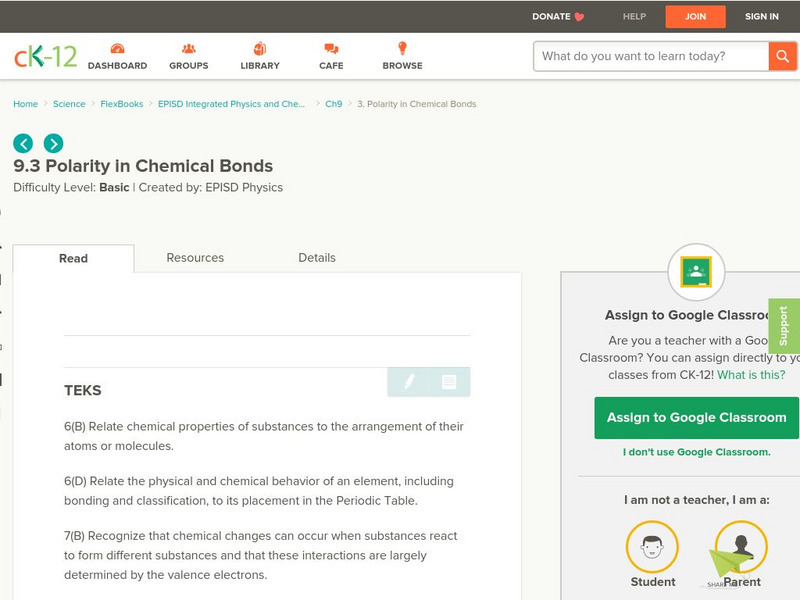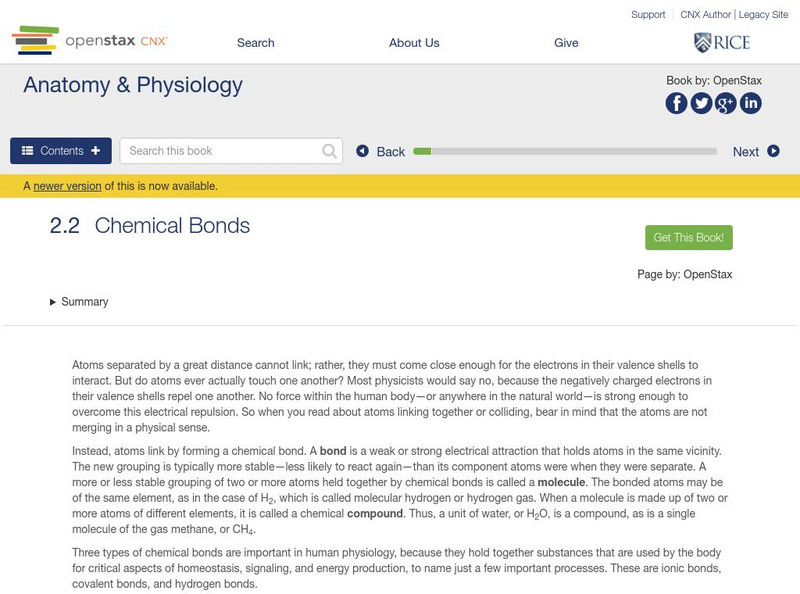Curated OER
EGG-cellent POLYMER PACKAGING DESIGN
Students investigate the concept of a polymer using an experimental design of protecting an egg in a bookbag. They test the properties of polymers and form an educated solution to the proposed problem. Then they describe the steps used...
Curated OER
Water Cycle Boogie
Students explore the water cycle. They learn the "Water Cycle Boogie." Students create hats to represent the different parts of the cycle and learn hand motions to go with the words of the song. Students practice singing the song and the...
Curated OER
BUILD A BURGER
Students recognize and name the products used to build a hamburger. They review the USDA Food Guide Pyramid. Students are given worksheets, and they match the burger parts to the picture parts. They conduct a taste test on samples of the...
Curated OER
Comparing Properties of Elements & Compounds
In this elements and compounds worksheet, students review the physical properties of different compounds and elements using websites for information. This worksheet has 1 graphic organizer and 1 short answer question.
Curated OER
Giants of the Protozoa
Students describe and define xenophyophores. For this protozoa lesson students divide into groups and complete a lab activity.
Pennsylvania Department of Education
Energy in Motion
Fifth graders explore energy transfer. In this thermal energy lesson, 5th graders stretch rubber bands several times and estimate the band's temperature change. Students identify this action as an example of thermal energy. Students...
Curated OER
Lactose & Lactase
Students examine the characteristics of lactose and lactase. In this enzyme lesson students study the lactose in milk and its rate of dissolution.
Curated OER
Evaporation of Alcohol and Water
Students investigate the process that occurs when liquids evaporaate. They test water and alcohol to determine which substance evaporates more quickly and relate the rate to energy changes.
Curated OER
Synthesizing Pigment and Dyeing Cloth
Students create a synthetic dye and oxidize the dye and record the effects.
Curated OER
Nutrient Biochemistry
In this lipids worksheet, students review the different types of lipids and how lipids are used by the body. This worksheet has 3 drawings and 27 fill in the blank statements.
Curated OER
Solar
Students study solar energy. For this renewable energy lesson students complete several lab activities using different controls and variables.
Curated OER
Water Quality Monitoring
Pupils comprehend the four parameters of water quality. They perform tests for salinity, dissolved oxygen, pH and clarity or turbidity. Students comprehend why scientists and environmental managers monitor water uality and aquatic...
Curated OER
Compounds and Mixtures Notes
In this matter worksheet, students watch a movie and then compare the differences between compounds and mixtures. This worksheet has 16 fill in the blank questions.
Curated OER
Teaching The Scientific Method Using Adhesives
Students use the six step scientific method to experiment with the differences in adhesives. Students test for tack, shear, and peel in these activities.
Curated OER
Micro-Magic With Sticky Ions
Learners view a video about the formation of precipitates. They complete a worksheet that asks them to identify what makes a compound form and what holds it together.
Curated OER
Understanding of the Structure of an Amino Group
High schoolers review the characteristics of acids and bases. They examine the structure of an amino group and compare amines to ammonia. They work together to develop the concent of polymerization.
Curated OER
Ozone Tag
Students explain the role of stratospheric ozone and predict at least three ways in which depleted ozone would change her/his lifestyle. They then
describe the process by which chlorine or bromine compounds can break down ozone molecules.
Curated OER
The Great Gas Race
Fourth graders improve their understanding of Graham's Law by using properties of gases to evaluate the rate of effusion of two compounds as they vaporize. They engage in a lab which elevates their understanding of the properties of gases.
Curated OER
A TOUGH NUT TO CRACK
Based on a set of criteria, learners will evaluate the quality of pecans.1. Bring a gram scale and papershell pecans. Provide five pecans for each student. 2. Divide the class into groups of five and provide each member with five pecans....
PBS
Pbs Learning Media: Chemical Bonds
This interactive activity developed for Teachers' Domain demonstrates how attractive forces between atoms create chemical bonds, resulting in the formation of molecules and compounds.
Concord Consortium
Concord Consortium: Molecular Workbench Showcase: Chemistry, Chemical Bonds
Simulations to show students the nature of chemical bonds. Simulations include an explanation of stereochemistry, atomic orbitals, chemical polarity, formation of an atom, and a summary quiz.
CK-12 Foundation
Ck 12: Polarity in Chemical Bonds
[Free Registration/Login may be required to access all resource tools.] Students will determine the polarity of a chemical bond using the electronegativity chart, and then distinguish between nonpolar covalent, polar covalent, and ionic...
Khan Academy
Khan Academy: Biology: Chemistry of Life: Chemical Bonds
Review over covalent, hydrogen, and ionic bonding in this article. Learn how molecules are held together by chemical bonds.
OpenStax
Open Stax: Chemical Bonds
Learn here about chemical bonds, a weak or strong electrical attraction that holds atoms in the same vicinity.
Other popular searches
- Types of Chemical Bonds
- Covalent Chemical Bonds
- Chemical Bonds Lab
- Chemical Bonds Biology
- Chemical Bonds and Reactions
- Review Chemical Bonds
- Chemistry Chemical Bonds
- Chemical Bonds Review Games
- Science, Chemical Bonds
- Chemical Bonds in Milk
- Science Chemical Bonds
- Chemical Bonds in Liquids























